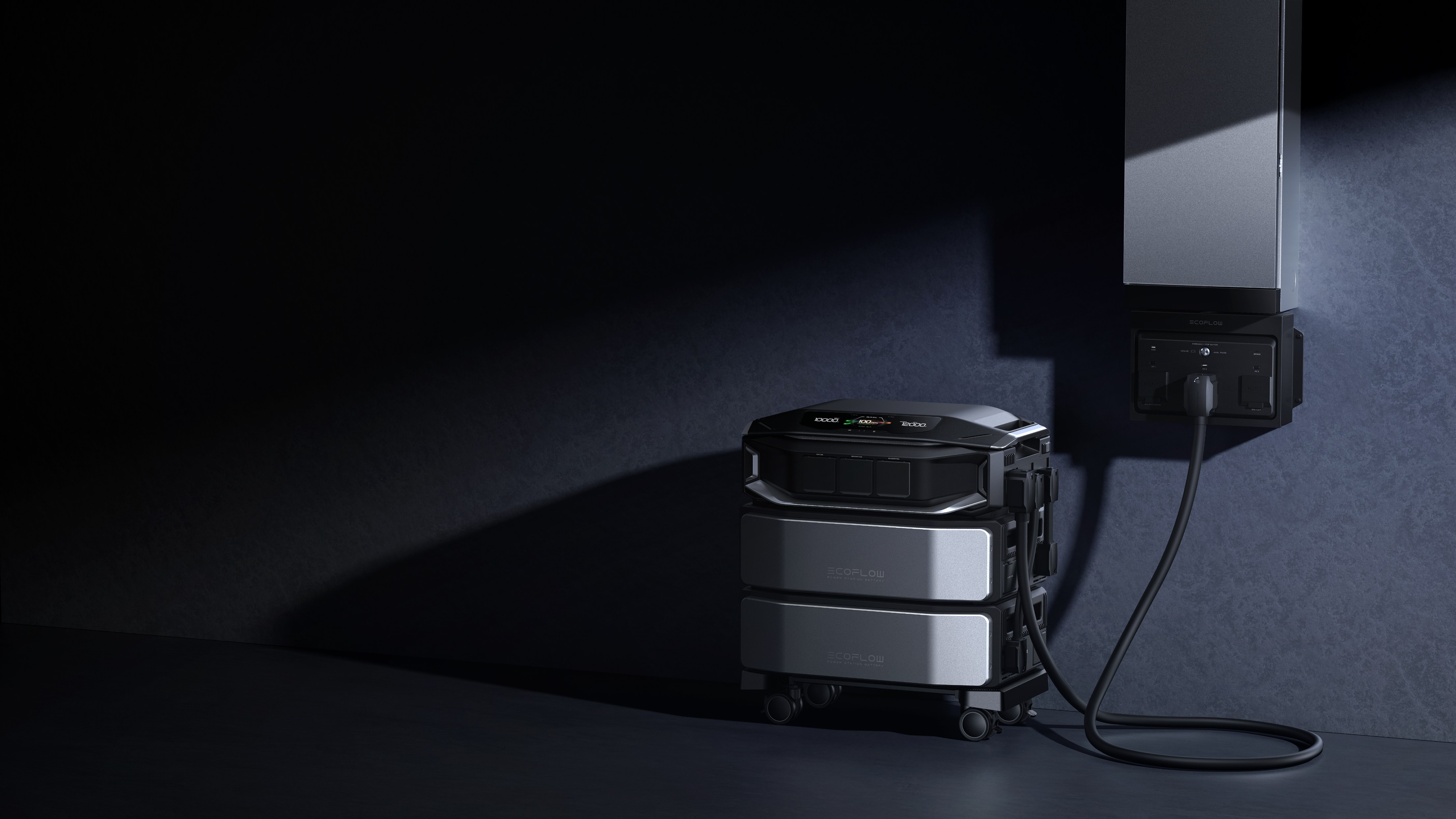Thermal Storage Vs. Home Battery Storage: Which Is Right For You
Getting storage right is simpler than it looks. If your main goals are outage backup and day-to-day bill savings, home battery storage is usually the most direct path. If your home’s big loads are HVAC and hot water, and your utility has strong peak/off-peak price swings, thermal storage can shift those heavy loads at lower cost. The best choice depends on your load mix, climate, solar roof, rates, and space. This guide breaks it down in plain language so you can decide with confidence.
What is Thermal Storage and Battery Storage? How are they Different?
Both "store energy now, use it later" systems store a different type of energy and connect to a completely different location in your home. A basic understanding will save you time and money when you're researching quotes.
Main Components
Home Battery Storage Installations: Battery pack, inverter/charger, gateway or critical-load panel, energy management app.
Thermal Storage Components: Storage tank (water, ice, or phase change material), heat pump or chiller, valves/pumps, controls.
Energy Forms And Routes
Home Batteries: Store electricity and supply electric power when needed with a fast response time (milliseconds). Typical round-trip efficiency is around 90% for the majority of household batteries.
Thermal Storage: Store heat or cold (not electric). Overnight charging (producing chilled ice, ice water, or warming water) defers HVAC and hot-water runs from peak hours. With proper insulation, daily standby losses can be kept low; the U.S. DOE notes that insulating storage tanks can reduce standby losses by 25–45%. However, for the whole cycle efficiency, it's variable because you also incur charging for the chiller/heat pump and pumping losses.
Key Performance Metrics
Home Batteries: kWh (usable capacity), kW (continuous/peak power), round-trip efficiency, cycles, years of warranty.
Thermal Storage: Ton-hours or kWh-thermal, charge/discharge rate, tank heat loss, heat-pump COP (most home heat pumps generate roughly 2–4× heat per kWh of electric input for average conditions), and controls. (DOE Energy Saver cites 2–4× for air-source heat pumps.)
If you need power when the power's off, batteries are the way to do it. And if you want to move your HVAC or your hot-water equipment out of that expensive time of day, thermal storage's the way to do it.
Which Option Fits My Home Best?
Select the appropriate tool for the task. Have your backup requirements, solar plans, HVAC installation, and rate plan in mind before jumping into those model numbers.
Power Backup
If your house requires 240V startup for large compressors (think a 5-ton AC or a larger heat pump), a high-power unit such as the EcoFlow Delta Pro Ultra X (12kW split-phase 120/240V, scalable to 36kW; 12–180kWh capacity; supports 5-ton AC) will be able to power whole-home backup with split-phase 120/240V and the surge headroom to initiate hefty LRA loads, keeping comfort and the essentials online without workarounds.
Solar Self-Consumption
If you have rooftop solar and you're interested in using additional self-generation during the night, home battery banks for solar are the simple solution. It absorbs surplus during the midday and meets the evening peak. Thermal storage also increases self-use from solar energy by converting excess power into cold/heat for late users, but it offsets HVAC or hot-water demand.
HVAC and Hot Water Loads
If your rates jump in summer cooling or winter heating peaks, thermal storage is a powerful lever. You "charge" at night and "discharge" in peak periods, by-passing your meter when your rates are highest. Most heat pumps generate two to four units of heat/cooling per unit of power (that's the COP advantage), all of which supports the economics.
Rates and Climate Fit
Time-of-use (TOU) or demand charges make load shifting a reasonable option. Batteries can handle whole-house shifting and backup. Thermal storage is a viable option when cooling or hot-water loads are high and peak rates are steep. Thermal system sizing and insulation are critical in humid or icy conditions. For all conditions, installing batteries in shaded or indoor locations is worthwhile for longevity.
If you want backup and easy, broad savings, select a home battery. If your peaks are primarily caused by AC or hot water, thermal storage can shift your peaks affordably.
Which Option Saves More Money And Space?
Consider beyond sticker cost. Installed cost, operation cost, efficiency, lifetime, space needs, and incentives. The cheapest system to purchase isn't necessarily the most affordable system to own.
Capex and Opex
Home Batteries: Medium to high initial costs (equipment and electrical work)—very low recurrent maintenance.
Thermal Storage: Generally, the initial cost for the tank itself is lower; you already have a heat pump/chiller. Maintenance remains reasonable (insulation integrity, pump/valve). Scholarly comparisons comment on the low initial cost of ice storage but criticize the efficiency penalty associated with charging and system losses.
Lifespan and Efficiency
Home Batteries: Most modules achieve ~90% round-trip at the device level; warranties typically are 10 years with cycle restrictions.
Thermal Storage: Some tanks can maintain thermal losses at minimal levels (≈<1%) for the day, but a safer planning rule is to focus on insulation quality since DOE shows insulation can cut standby losses 25–45%—design with your contractor.
Space and install
Home Batteries: Compact silhouette, floor or wall mount, quiet operation.
Thermal Storage: Requires tank volume (water/ice/PCM) and routing of lines; noise from pump and fan is introduced. Good designers employ stratified tanks and the appropriate diffusers to maintain the layers stable and minimize losses.
For a quick and easy installation that still scales, EcoFlow Delta Pro Ultra X pairs with a Smart Home Panel 3 (200A, up to 32 circuits, <20 ms auto-switchover) and lets you expand from 12kWh toward 180kWh without a major rewire. It’s a realistic trajectory if you need immediate payoff today and flexibility for the future.
Incentives and Billing
Home Batteries: Can qualify for federal/state incentives and often for virtual power plants (VPP) that will actually pay you to help the grid when it's most needed. The battery extends the capabilities of the VPPs, but most customers rely on state incentives to make the deals financially successful.
Thermal Storage: Recommended where TOU spreads are wide or demand charges are high. Some utilities offer HVAC or heat-pump rebate programs that help offset the expense of the "charge engine."
Batteries offer tight control and backup with predictable efficiency. Thermal storage offers big-load shifting at an owner cost when HVAC drives your bill. Your rate plan and space usually tip the scale.


How Should I Choose? Can I Use Both Home Battery And Thermal Storage?
Most of the houses fall into four simple lanes. Choose a lane from the given matrix and adjust using your Installer.
Decision Checklist
What must happen when the power goes out—and for how long?
What are your cooling/heating and your hot-water loads?
Do you have solar power now (or soon)?
What are your peak vs. off-peak rates? Demand fees?
Where can the equipment live (indoors/garage/outdoor pad)?
Hybrid Strategy
You can mix both: a battery covers outage and evening peaks for key circuits, while thermal storage shifts HVAC or hot water on the heaviest days. Hybrid control maintains high comfort and ensures smooth power needs. In that setup, the EcoFlow Delta Pro Ultra X (12kW split-phase) provides the 240V backbone with <20 ms switchover via Smart Home Panel 3, while thermal storage shifts HVAC run time. Additionally, per-circuit control helps you prioritize essentials during peaks or outages.
Decision Matrix
| Condition | Recommended Path | Why It Fits |
| Frequent outages; need critical or whole-home backup | Home Battery Storage | Instant, quiet backup; powers outlets and critical loads; integrates with inverter/panel |
| Strong solar and low evening export credit; want higher self-use | Home Battery Storage For Solar | Charge at midday, cover the evening peak; eligible for TOU/VPP in many areas |
| High HVAC or hot-water share; big TOU spread or demand charges | Thermal Storage | Low-cost, large-scale shifting of AC/heating/DHW loads; reduces billed peaks |
| Want backup and deep peak shaving | Hybrid (Battery + Thermal) | Battery for reliability and fine control; thermal for heavy load shifting with good COP |
Pick the lane that matches your home today. If your needs change later, you can still add the missing half and run a hybrid.


FAQs About Thermal Storage & Home Battery Storage
Q1. How Does Thermal Storage Perform In Humid Or Very Cold Climates?
Thermal storage works in both, but the design goals shift. In humid climates, you’ll want tanks and piping with high-quality insulation and vapor barriers to prevent condensation and efficiency loss. In freezing climates, protect outdoor equipment and keep standby losses low with excellent insulation. Remember: tank storage losses themselves can be tiny, but total performance includes the heat-pump/chiller COP and pumping. A carefully designed system keeps stratification stable and the COP high across seasons, which is what makes the system profitable.
Q2. I Rent My Home. Do I Have Any Options?
You do—just with different constraints. Full thermal storage is tough for renters because it needs a tank, plumbing, and controls. However, portable home batteries (or wall-mounted units with landlord approval) are feasible and can keep essential items running during outages. If you have a window/portable heat pump, a simple time-of-use schedule can still shift some cooling work to off-peak hours. Also, ask your utility about demand response programs for smart thermostats—you. You may get bill credits for letting them precool your space on event days. When you move, your portable power station comes with you.
Q3. Will Either System Increase My Home’s Appraised Value?
Local markets vary, but buyers increasingly value lower bills and backup. Batteries are visible in listings (“solar + battery backup”), and some lenders now ask about storage in green appraisal addenda. Thermal storage is less visible to buyers, but if you pair it with a new high-efficiency heat pump and clear peak-bill reductions on your utility history, your agent can tell that story. As always, save your permit, warranty, and commissioning paperwork—proof of a professional job supports value.
Q4. What About Using My EV As A Battery (V2H/V2G)?
This is coming fast, but support is model-specific. You need an EV that allows bidirectional charging and a compatible bidirectional charger/inverter. When it works, your car can act like a big battery for outages or TOU shifting. Limitations include interconnection rules, warranty terms, and the frequency of battery cycling. For many households, V2H complements a smaller stationary battery; the wall battery handles day-to-day backup while the EV steps in for longer events. Check your EV and local codes before planning around them.
Conclusion
Ready to act? Choose battery-first with the EcoFlow Delta Pro Ultra X. Its 12kW split-phase 120/240V output (with two battery packs connected to separate ports; 8kW with one pack), <20 ms automatic switchover via Smart Home Panel 3, and scalable storage—12kWh base (2 packs) up to 60kWh per unit and up to 180kWh system-wide—give you whole-home backup today and room to grow—including starting big loads like a 5-ton AC (supports LRA up to 178A). Prefer hybrid? Keep Delta Pro Ultra X as the 240V backbone and add thermal storage to shift HVAC and hot water. Share your loads and rate plan—I’ll help pressure-test sizing so you land a clean, confident install.